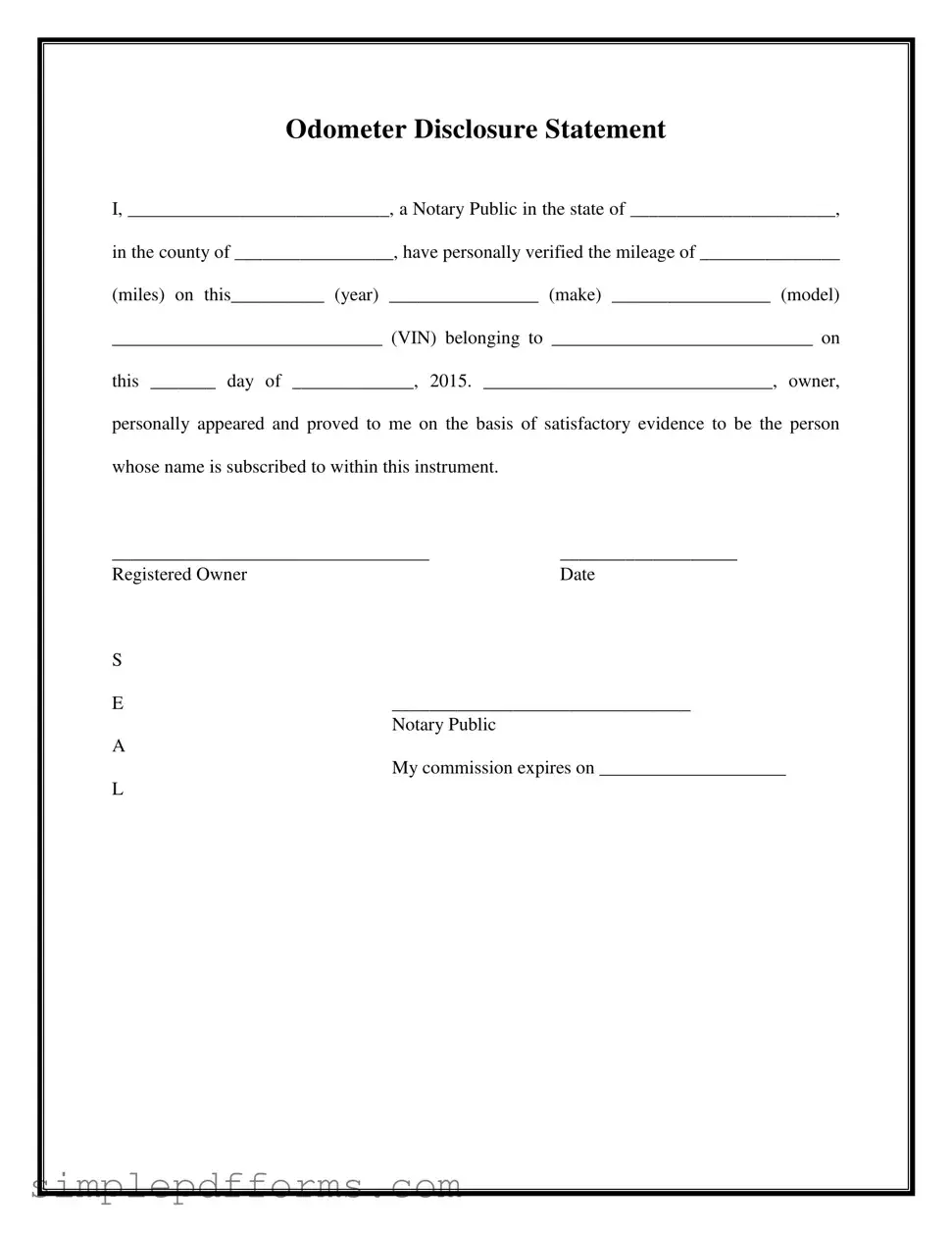Fill a Valid Notarized Odometer Statement Form
The Notarized Odometer Statement is a legal document that certifies the mileage of a vehicle at the time of sale. It is completed by a notary public, who verifies the information provided by the vehicle's owner. This form helps prevent fraud and ensures transparency in vehicle transactions.
Open Notarized Odometer Statement Editor Now

